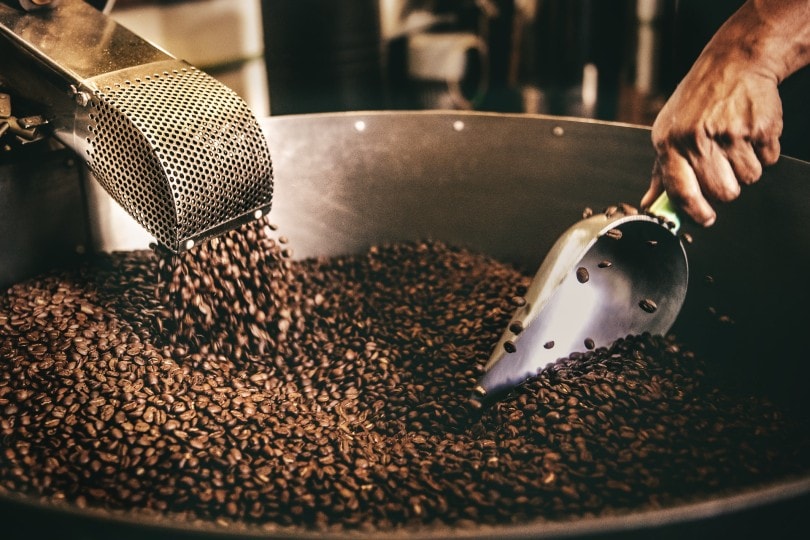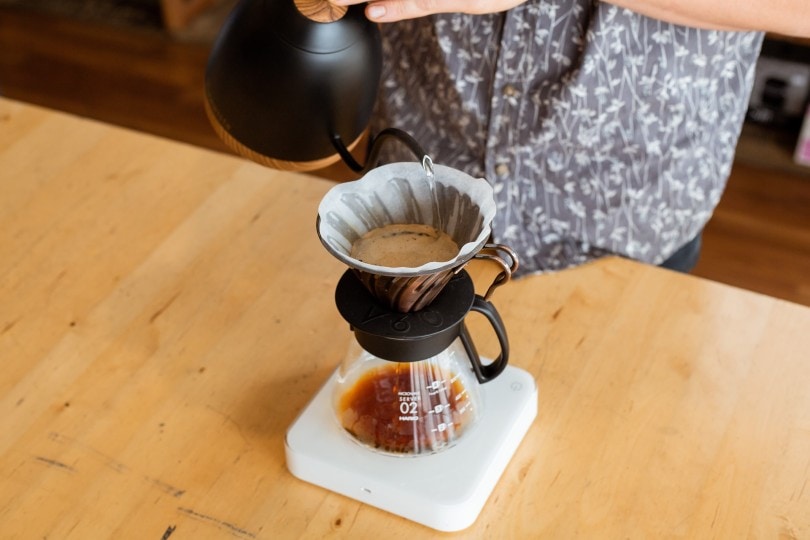
Over the last 50 years or so, there has been a multitude of facts floating around about one of the world’s most popular beverages: coffee. This liquid fuel has been a necessity for millions of people. About 400 billion cups of coffee are gulped down every year worldwide. Whether it is a part of the therapeutic morning ritual that starts someone’s day, or they need that afternoon pick-me-up to finish out the daily grind, coffee has become an indelible part of cultures around the world.
But there are some things about this magic bean that usually go overlooked, especially when it’s being knocked back like a shot of whiskey by a gunslinging cowboy. It is true, caffeine is what most people are going for. They take it like medicine and thereby cure their headache or slough off their grogginess. This may have unintended consequences, some of which can jeopardize your health over time. There are also very positive consequences and health benefits of drinking coffee. This article will deal with these positive aspects. The short answer is that coffee does have antioxidants.

What Is an Antioxidant and Why Is It Important?
In short, antioxidants are compounds that can prevent oxidization. Oxidization occurs when atoms that contain unpaired electrons, properly called free radicals, seek to bind themselves to other electrons to stabilize. When this happens, the healthy cell is robbed of its electrons. Antioxidants are compounds that can supply the free radicals with their own electrons thereby rescuing the healthy cells from being damaged.
Antioxidants are found in a variety of sources such as fresh, raw, and uncooked fruits and vegetables, nuts, and unpasteurized milk. However, the number one source of antioxidants in the Western diet is- you guessed it- coffee.

What are Coffee Antioxidants?
Even though the human body does produce some antioxidants on its own, the amount is not sufficient to sustain good health. This is also why it is important to supply antioxidants to our bodies with the food and drink that we consume. Coffee is one of the best sources and one of the easiest ways to deliver antioxidants to the body.
Coffee is rich in antioxidants from the hydroxycinnamic acids family. The antioxidants found in coffee of the hydroxycinnamic family are chlorogenic acid, caffeic acid, ferulic acid, and coumaric acid. Other ingredients in coffee make these antioxidants more potent, especially N-methylpyridinium which is acquired by the coffee beans during the roasting process. Again, these major benefits often go overlooked especially when people are drinking coffee for the taste and caffeination. But the way you enjoy your coffee may make or break the impact of the potential health benefits of the magic bean.
Which Coffee Has the Most Antioxidants?
There are mainly three factors to consider when choosing a coffee for health benefits. The source, the roast, and the preparation.
Source of Beans
It’s no secret that the organic food movement is growing and will continue to grow. While there are some foods that it doesn’t substantially matter if you buy organic, onions, for example, coffee is much different. Organic coffee is not affected by harmful fertilizers and pesticides- this is probably the biggest appeal to buying organic in general. Organic coffee is safer, but it is also higher in antioxidant content. Buying your coffee from a roaster who sources their beans from organic sources will maximize the health benefits.

Roasting of Beans
The type of roast can also affect the benefits of coffee. Our coffee beans that are harvested are the seeds of the coffee cherry, which itself contains caffeine. These cherries are picked, and the seeds (beans) are removed. When a roaster receives coffee beans to roast, it is these green coffee beans that were removed from the coffee fruit. There is a spectrum of different types of roasts but generally speaking, the three categories of coffee roasts are light, medium, and dark. Most coffee that you find in a restaurant or coffee shop that is called the “house coffee” is a medium roast. This middle-of-the-road coffee has the best of both worlds in terms of flavor profile.
Dark roast typically has smokier and bitter notes than a light roast which often carries more acidity and notes of fruit. Dark roast seems to have an inordinate number of devotees in comparison to medium and light roasts. This also may be since darker coffee with more robust flavors tends to take cream and/or sugar better, whereas a lighter roast’s flavor would seem slightly diminished by any additions. In terms of antioxidant content by roast, light roast contains the most antioxidants, and dark roast the least amount. This is because they can be reduced or eliminated by the roasting process. Not only are antioxidants removed, but they can also develop higher levels of acrylamide, with too much roasting. Acrylamide is defined by the US National Toxicology Program as a probable carcinogen.

Preparation Method
The other major factor when considering how to maximize the health benefits of coffee is the method of preparation. There are several ways to brew coffee. Far and away the most popular in the West is the drip coffee pot. The same mechanics are present in pour-over. Some popular pour-over methods include cone filter, flat-bottom filter, and Chemex. French press, AeroPress, instant coffee, and Keurig are also other options for making coffee at home. Of course, we would be remiss if we were to not mention espresso, which is more of a treat since most do not have access to a quality home espresso machine.
While there is still much research to be done on the relationship between brewing method and antioxidants, it is generally agreed that one of the biggest factors in determining the level of antioxidants in coffee is extraction time. This is the amount of time that the water is actually in contact with the ground coffee beans. Temperature is not a factor. Given that extraction time is important, drip coffee is the best choice overall. However, if you enjoy French press, you are still getting plenty of antioxidants.
The health benefits of coffee are not going to be seriously impeded by the method of brewing. The thing that can make your morning coffee unhealthy is what you put in your coffee. The sweetened creamers, syrups, powders, and unnecessary sugars, many of which have a multitude of ingredients that cannot be pronounced, can all counteract the benefits of antioxidants in coffee.

What Is the Healthiest Way to Drink Coffee?
The healthiest way to drink coffee is plain and black. Many who are accustomed to drinking only dark roast may find this difficult at first since cream can make it so palatable. But consider trying a light or even a medium roast of 100% Arabica beans. Arabica beans generally have a smoother flavor profile and as such, are a real crowd-pleaser. If you can’t find it in yourself to drink black coffee, it is okay to add milk or half and half. Many non-dairy substitutes are also good, provided they are free of unhealthy additives.
The little bit of cream and spoon of sugar that you put into your coffee each day is not going to make you unhealthy on its own. The kind of unhealthy coffee is the black and white mocha you order at Starbucks, full of syrup. Stay away from excessive additives and you should be okay to enjoy one to three cups per day.

Conclusion
You should not feel guilty about enjoying your morning cup. Whether it’s brewed in a pot, French press, or even a Briki/Ibrik pot (used for making Turkish Coffee by bringing it to a boil), coffee is packed with antioxidants and may even be linked to lower rates of Alzheimer’s disease, cancer, and cardiovascular issues so long as it is enjoyed in moderation and with few additions (cream and sugar).
SEE ALSO: What Is Laurina Coffee?
Featured Image Credit: John Diez, Pexels















